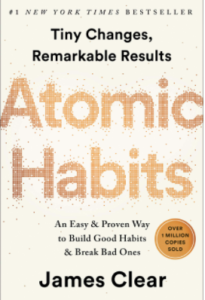
Your Psychological Space influences decisions you make as it relates to your Financial, Physical, and Intellectual Capitals. Building healthy habits as it relates to your Psychological Space supports your headspace and may help bring you peace of mind.
Here are a few ideas to get you started:
1. Practice Mindfulness.
Mindfulness is the ability to be fully present in the moment. Mindfulness may lead to decreased stress and increased happiness and ability to focus. Meditation often comes to mind when discussing mindfulness. While meditation is a way to practice mindfulness, mindfulness can be as simple as being aware of your body and how it moves through space while on a walk or being aware of the many flavors and textures you experience as you eat your favorite meal.
Here are a few tools that may help you practice mindfulness:
- Mindful Attention Awareness Scale. This scale is a self-measurement tool to help you assess your level of mindfulness-based on day-to-day experiences. A higher score reflects a higher level of dispositional mindfulness. It may be helpful to take this assessment periodically to see how your mindfulness evolves over time.
- Headspace is a helpful website and app. You can read articles about mindfulness and meditation, and even try some audio exercises.
- Aaptiv also offers guided audio meditations. You can select the length of time desired and choose from a range of meditation topics, from motivational to relaxation.
- Mindful Eating is a cookbook that pairs mindfulness with preparing and enjoying healthy meals. You do not have to be meditating to be mindful and this cookbook is a great way to apply your mindfulness habits to daily activities.
Make it Obvious. Use implementation intentions to clarify when and where you’ll perform your mindfulness behavior. For example, instead of “I will practice mindfulness,” state “I will practice mindfulness at my desk when I start to feel stressed.” When you make a specific plan for when and where you will perform a new habit, you are more likely to follow through.
Make it Easy. Practicing mindfulness does not mean you must meditate for two hours a day. Mindfulness can be as easy as taking two minutes to practice breathing techniques. Resetting your breath, or box breathing is one of our favorite methods to use. Close your eyes and breath in through your nose slowly for four counts. Then, hold your breath while slowly counting to four. Slowly exhale your breath for four counts. Again, hold for four counts. After about three repetitions, you should begin to feel a little calmer and more relaxed. This technique does not take up a lot of time but it can be a useful tool to clear your mind or to transition your headspace to a calmer state.
Make it Satisfying. Clear recommends making “doing nothing” enjoyable when it means you are steering clear of a bad habit. Doing nothing can also be satisfying when you are practicing mindfulness. Rather than feeling guilty about not responding to the latest email or text, enjoy the moment of pause. Utilize the moment to close your eyes and think of three things you are grateful for.
2. Express Gratitude.
Gratitude is an appreciation for the goodness in one’s life. Positive psychology research suggests that expressing gratitude is associated with greater happiness as it helps people feel more positive, relish good experiences, and deal with adversity.
- Gratitude Journal. If a habitual expression of gratitude is new to you, a gratitude journal is a great place to start. Many journals provide daily prompts to help you go deeper than the obvious things we’re grateful for: family, friends, and good health. Here is Verywell’s list of Top 10 Gratitude Journals of 2021. If you prefer to “journal” on your phone, check out this gratitude journaling app.
- Gratitude Meditation. Combine mindfulness and gratitude with a gratitude meditation. You can find these via the apps suggested above or on other fitness and wellness platforms, such as Calm and Peloton.
- Gratitude Box. Find a physical container where you store grateful memories, such as a shoebox or glass jar. Begin writing things down you’re grateful for or add mementos from experiences that brought you joy. When you need a boost, you have a resource to bring a smile to your face. You can even turn this into a family activity by encouraging all members of your household to contribute to the gratitude box!
Make it Obvious. To make being grateful part of your daily routine, stack it with something you already do daily, such as brushing your teeth or brewing a morning cup of coffee. Think about the things you are grateful for during that habitual activity, and eventually expressing gratitude will become a daily habit.
Make it Easy. Use the Two-Minute Rule to downscale your habit until it can be done in two minutes or less. Start with writing down 3 things for which you are grateful each morning or evening.
Make it Satisfying. Expressing gratitude doesn’t always have to be in a journal. Send a card to a friend or family member expressing gratitude for their friendship or love. Knowing you’ve brightened someone’s day can bring you a sense of joy and satisfaction.
3. Get Organized.
Knowing that physical items are in their place and that priority “to-do” items are complete can help you achieve peace of mind. Organization is an ongoing, evolving process.
- Getting Things Done is a productivity method that helps you organize the many aspects of your life. By capturing, clarifying, organizing, reflecting, and engaging, you will be able to implement a system that appropriately manages your “to-dos” and allows you to enjoy a productive and present state of engagement. A few members of our team have enjoyed reading this book by David Allen.
- The Home Edit is a show available on Netflix that showcases organization stories for various types of space. Beyond television entertainment, The Home Edit also has a blog that includes organization tips and tricks.
- The KonMari Method™. If the idea of organizing excites you because you will be able to interact with many different things that bring you joy, you can try Marie Kondo’s style of tidying up, the KonMari Method™. Her method focuses on identifying items that bring you joy and parting with items that bring you clutter and/or negative thoughts. Read more about this on our blog.
Make it Easy. Prime your environment before you delve into organizing a space. Before you empty out your pantry and realize you need to install two more shelves to maximize storage, take an inventory of your pantry space. Identify the need for shelving or containers and get basic supplies prepared beforehand.
O’Connell, B.H., O’Shea, D. & Gallagher, S. Examining Psychosocial Pathways Underlying Gratitude Interventions: A Randomized Controlled Trial. J Happiness Stud 19, 2421–2444 (2018). https://doi.org/10.1007/s10902-017-9931-5
Photo Sources: www.unsplash.com



